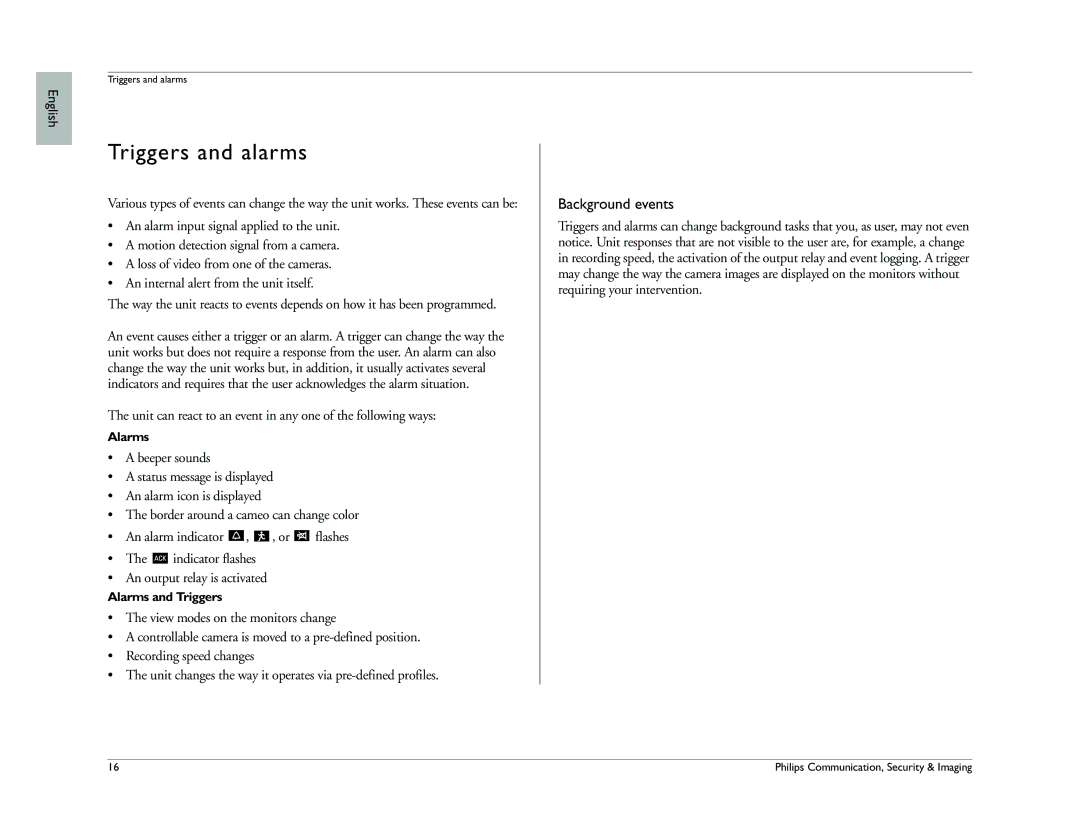
English
Triggers and alarms
Triggers and alarms
Various types of events can change the way the unit works. These events can be:
•An alarm input signal applied to the unit.
•A motion detection signal from a camera.
•A loss of video from one of the cameras.
•An internal alert from the unit itself.
The way the unit reacts to events depends on how it has been programmed.
An event causes either a trigger or an alarm. A trigger can change the way the unit works but does not require a response from the user. An alarm can also change the way the unit works but, in addition, it usually activates several indicators and requires that the user acknowledges the alarm situation.
The unit can react to an event in any one of the following ways:
Alarms
•A beeper sounds
•A status message is displayed
•An alarm icon is displayed
•The border around a cameo can change color
•An alarm indicator ![]() ,
, ![]() , or
, or ![]() flashes
flashes
•The ![]() indicator flashes
indicator flashes
•An output relay is activated
Alarms and Triggers
•The view modes on the monitors change
•A controllable camera is moved to a
•Recording speed changes
•The unit changes the way it operates via
Background events
Triggers and alarms can change background tasks that you, as user, may not even notice. Unit responses that are not visible to the user are, for example, a change in recording speed, the activation of the output relay and event logging. A trigger may change the way the camera images are displayed on the monitors without requiring your intervention.
16 | Philips Communication, Security & Imaging |
